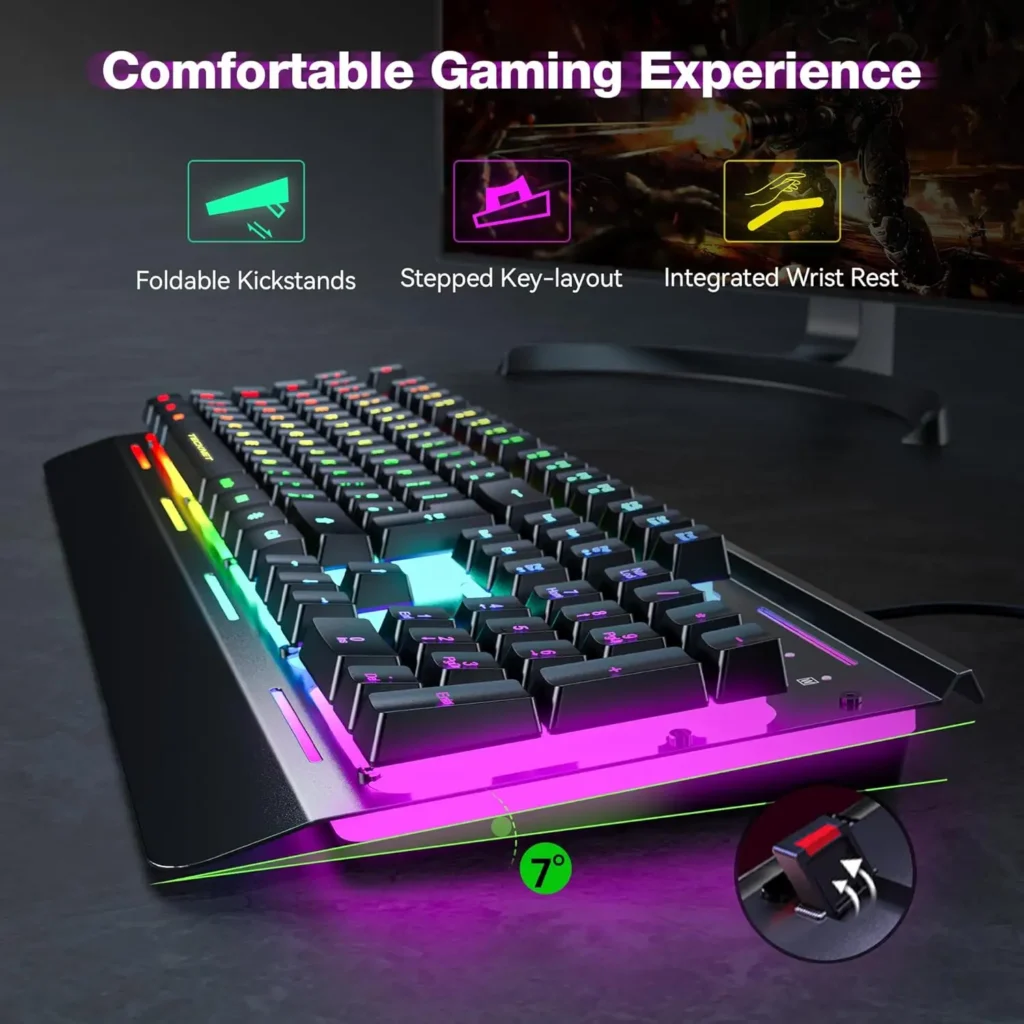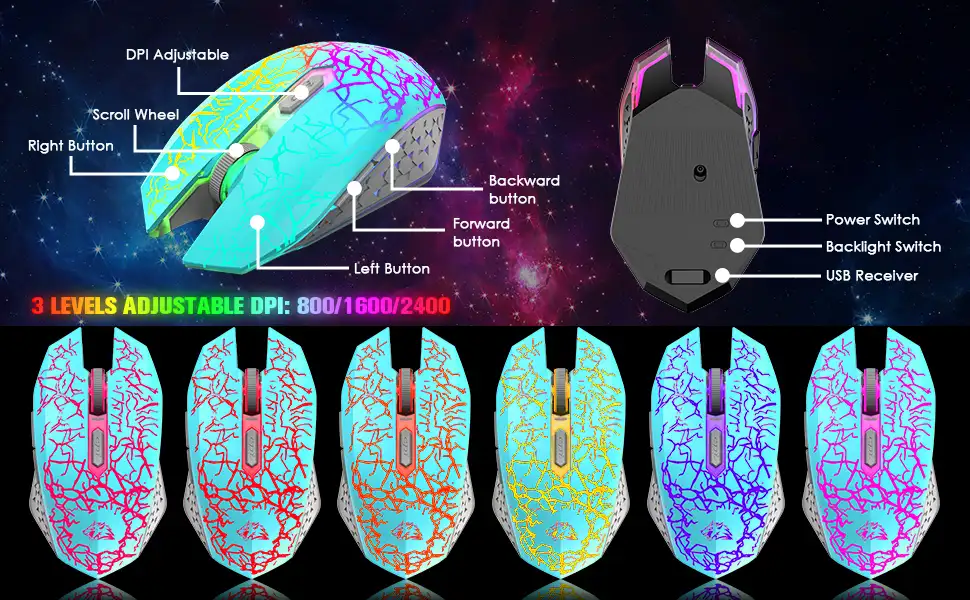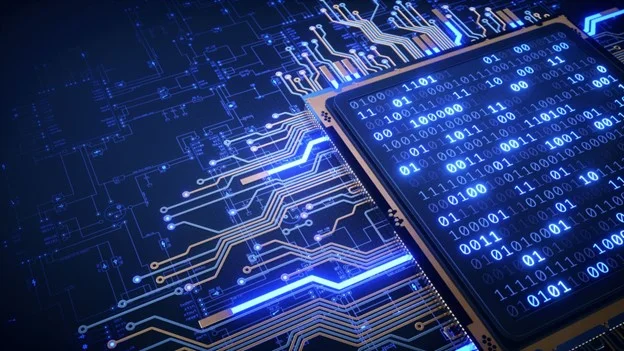
Technology is evolving at an ever-accelerating pace, so too does the world of computer accessories. What was once a basic collection of peripherals to interact with a computer is now a rapidly advancing ecosystem, focused not only on improving functionality but also enhancing user experience and ergonomics. In 2025, we’re seeing smarter, more personalized, and futuristic designs for the essential devices that accompany our PCs: keyboards, mice, monitors, and other essential accessories.
Let us explore what the future holds for these critical computer peripherals. From AI-driven features to advanced ergonomics and wireless capabilities, the next generation of computer accessories promises to change the way we work, play, and interact with our digital environments.
1. The Evolution of Smart Keyboards
The traditional keyboard has remained relatively unchanged for decades—until now. The future of keyboards is leaning heavily towards smart technology that improves both functionality and user comfort. One key trend is the integration of artificial intelligence (AI) to predict your typing patterns and automate functions. This could mean predictive text, automatic formatting adjustments, or even customized shortcut suggestions based on your daily tasks.
What’s coming in 2025?
- AI-Powered Customization: Keyboards will begin to “learn” from user behavior. They could automatically change key assignments based on the apps you’re using or your preferences. For instance, when you’re working in Photoshop, certain keys could be mapped to specific functions, while in a coding environment, your most used commands might be prioritized.
- Ergonomic Design with Adaptive Features: As remote and hybrid work continues to rise, comfort will be a priority. Keyboards in the future will feature split and tented designs that adapt to the natural movement of your hands. Expect to see more integrated wrist supports and customizable key heights that reduce strain and fatigue.

- Haptic Feedback: Gone are the days of a one-size-fits-all typing experience. Haptic feedback is likely to evolve, giving users tactile responses to different key presses. This will not only enhance the typing experience but may even help users type more efficiently.
- Touchscreens and Flexible Materials: We may also see the introduction of completely touch-based keyboards or flexible, foldable materials that allow users to have a full-sized keyboard wherever they go. Imagine a keyboard that can be rolled up and stored easily in your bag, but still offer tactile or even haptic feedback.
2. Mice: Precision, Gesture Control, and Ergonomics
The humble computer mouse is one of the most iconic computer accessories, but just like the keyboard, it is undergoing a radical transformation. Traditional mice may have worked for decades, but with more advanced technologies and new demands for productivity, the future of the mouse is becoming much more complex.

What’s coming in 2025?
- Control by gestures: As the line between virtual reality (VR) and traditional computing continues to blur, we’ll likely see more mouse-like devices that rely on gesture control. Rather than clicking or dragging, users will be able to interact with their computer simply by moving their hands in the air, mimicking actions like swiping, zooming, or clicking.
- Ergonomic Mice: Ergonomics will be a priority in the development of future mice. Designs will be more centered around reducing hand strain by promoting a natural wrist position. Vertical mice, for example, are designed to allow users to hold the mouse as they would a handshake, reducing pressure on the wrist and hand.
- Integration through AI: Just as AI is becoming a core component of keyboards, AI could be incorporated into mice as well. Advanced mice may have smart sensors that adapt sensitivity and speed depending on the user’s task. Whether you’re gaming, designing, or working, the mouse could become a fully dynamic tool that adjusts its settings to optimize your work.
- Wireless Charging: Wireless charging pads are already revolutionizing how we power up our devices, and the future of the mouse could follow suit. Expect to see mice that charge wirelessly and instantly when placed on a designated pad, eliminating the need for charging cables altogether.
3. The AI-Driven Peripherals and Rise of Voice Control:
Although the mouse and keyboard may remain the central components of many computing tasks, other peripherals are also starting to step in, particularly voice-driven and AI-based accessories. With the growth of AI personal assistants like Siri, Alexa, and Google Assistant, voice control has already entered the mainstream. But what if these voice assistants become more integrated with your entire computing

What’s coming in 2025?
- Voice-Controlled Inputs: Future peripherals may include voice-responsive systems that help users interact with their computer without ever needing to touch a keyboard or mouse. This will be particularly useful in accessibility contexts, allowing users with disabilities to operate their computers more easily.
- AI-Powered Personalization: Voice assistants are already good at managing tasks like setting reminders or searching the web, but future versions could go much further, analyzing your behavior and offering tailored solutions. Imagine a mouse that adjusts its speed based on your preferences or a keyboard that changes its layout based on your voice commands.
4. Virtual and Augmented Reality Accessories
The push towards more immersive computing experiences has led to a growth in virtual reality (VR) and augmented reality (AR) technology. As more people adopt VR and AR for gaming, education, and work, new accessories designed for these experiences will be critical.

What’s Coming in 2025?
- VR/AR Haptic Devices: Traditional computer accessories don’t translate well into the virtual or augmented world. The future will bring more specialized haptic devices, such as gloves or suits that simulate physical sensations. These haptic feedback systems will allow users to touch, feel, and interact with virtual objects as if they were real.
- AR-Enabled Eyewear: While VR is expected to remain a more isolated experience, AR technology will change the way we interact with our surroundings. Expect AR glasses that overlay information onto the real world, making your computer screen a part of your environment. This might eliminate the need for traditional monitors or even keyboards in certain scenarios.
- Wireless VR Controllers and Trackers: Future VR accessories will also offer more precise and wireless controls. Expect controllers that track hand movements with high accuracy, as well as motion trackers that let you navigate 3D spaces in new and intuitive ways.
5.The Future of Visuals:
With the advancements in accessories, the development of computer monitors and displays will undoubtedly keep pace. For the future, we’re looking at smarter, more immersive displays that push the limits of resolution, refresh rates, and even the way we interact with visuals.

What’s Coming in 2025?
- AI-Based Screen Calibration: Monitors will likely include AI-powered features that automatically calibrate colors, brightness, and contrast based on the environment and user preferences.
- Flexible and Foldable Displays: Just as foldable smartphones are gaining popularity, the future of computer monitors may be flexible. Imagine a screen that you can roll up, carry in a bag, and then unfold into a massive display when you need it. This will revolutionize portability and how we use screens on the go. Higher resolutions will continue to push the envelope. By 2025, 8K displays could become the norm, particularly for high-end gaming, creative
Conclusion: A New future of Computing Accessories
As technology advances fast, the future of computer accessories is bright and filled with innovative solutions designed to make our digital experiences more seamless, efficient, and immersive. From AI-powered keyboards to voice-controlled peripherals and advanced VR devices, the next generation of accessories will enable us to interact with our computers in ways we once only dreamed of.
As technology advances, it’s clear that the accessories we rely on every day will continue to evolve. The possibilities are endless, and as we move forward into this new era, we can expect even more groundbreaking developments that will redefine how we work, play, and interact with the digital world.
Written and compiled by Sher Ali Khan, a Freelance writer

